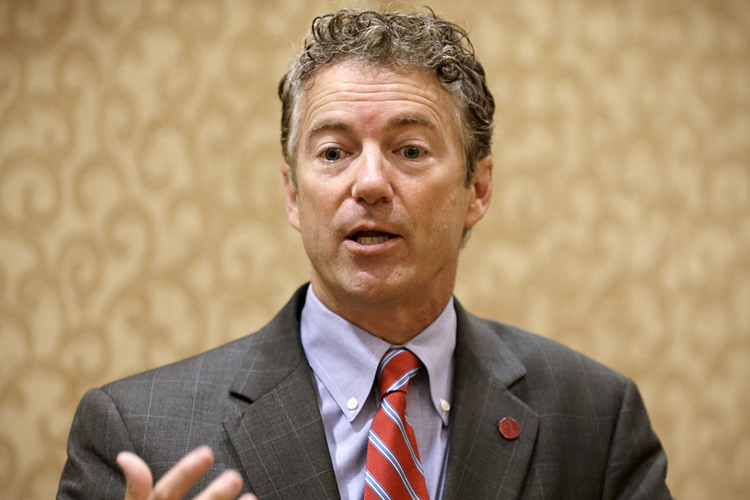U.S. financial conditions deteriorated as Republican and Democratic congressional leaders each said the other party needs to make the next move to resolve the budget impasse in Washington.
The Bloomberg U.S. Financial Conditions Index declined 0.03 to 1.18, and down from 1.315 at the end of last week. The gauge measures stress in the markets by combining everything from money-market rates to yields on government and corporate bonds to volatility in equities. During the debt-ceiling debate of August 2011, the index fell as low as negative 1.631.
Senate Majority Leader Harry Reid said the Republican- controlled House should vote to end the government shutdown and drop demands to change President Barack Obama’s signature healthcare law. House Speaker John Boehner said Reid and Obama should negotiate. Treasury Secretary Jacob J. Lew said over the weekend that Congress must boost the debt limit by Oct. 17 or the U.S. risks defaulting on its payments.
“What frightens us the most is what happens to the plumbing system of the global-financial system,” Mohamed El-Erian, chief executive and co-chief investment officer at Pacific Investment Management Co., said in an interview on Bloomberg Television’s “Bloomberg Surveillance” with Tom Keene. “You will have cascading failure, multiple defaults, and Treasuries that act as collateral would be very difficult to exchange and people will simply step back.”
A default could seriously damage the world economy, leading to major disruptions in financial markets, both in the U.S. and abroad, Olivier Blanchard, chief economist of the International Monetary Fund, said today at a news conference.
It’s a “low probability, but, were it to happen, it would have major consequences,” Blanchard said.
Treasuries
Yields on one-month U.S. government securities climbed to 0.289 percent, the highest level since October 2008, according to data compiled by Bloomberg. The securities are yielding more than the 0.174 percent yield on the one-month London interbank offered rate.
The yield on the benchmark 10-year U.S. Treasury note was little changed at 2.63 percent at 12:13 p.m. in New York, according to Bloomberg Bond Trader prices. The yield is down from the high this year of 3 percent on Sept. 6 and compares with the average of 3.53 percent over the past decade. The Treasury sold $30 billion of one-month bills today at a rate of 0.35 percent, the highest since 2008.
Rate Derivatives
The U.S. two-year interest-rate swap spread, a measure of debt-market stress, fell 0.98 basis point to 11.88 basis points. The gauge typically narrows when investors favor assets such as corporate bonds and widens when they seek the perceived safety of government securities. The measure has dropped from this year’s high of 19.55 on June 21.
Credit
A gauge of U.S. company credit risk increased. The Markit CDX North American Investment Grade Index, a credit-default swaps benchmark that investors use to hedge against losses or to speculate on creditworthiness, climbed 1.1 basis points to a mid-price of 83.6 basis points, according to prices compiled by Bloomberg. The index, which typically climbs as investor confidence in credit deteriorates and falls as it improves, has averaged 81.8 this year.
Currencies
The Bloomberg U.S. Dollar Index, which tracks the greenback against 10 major currencies, rose 0.11 percent to 1,009.22. The index has traded in a range of 1,007.9 and 1,053.48 the past three months. The greenback gained 0.26 percent to 96.96 yen, after touching 96.67, its weakest level since Aug. 12. The Japanese currency added 0.22 percent to 131.61 per euro.
Stocks
The Standard & Poor’s 500 fell 0.82 percent to 1,662.23 at 12:20 p.m. in New York. The Dow Jones Industrial Average declined 91.77 points, or 0.61 percent, to 14,845.43.
Volatility
The CBOE Volatility Index, or VIX, rose 4.74 percent to 20.33, approaching its closing high for the year of 20.49 in June and compared with a low of 11.3 in March. Volatility in Treasuries as measured by the Bank of America Merrill Lynch MOVE index fell to 80.29, compared with the average this year is 72.3.
Currency swings as measured by the JPMorgan Global Volatility Index fell to as low as 8.68, the lowest level since May 8, versus a 2013 average of 9.38.
Energy, Commodities
West Texas Intermediate crude oil for November delivery rose 88 cents to $103.91 a barrel on the New York Mercantile Exchange.
Gold futures for December delivery fell 0.05 percent to $1,324.50 an ounce on the Comex in New York. Prices dropped 2.1 percent last week amid speculation that the Federal shutdown that has furloughed 800,000 workers would be short-lived.
Copper futures for delivery in December fell 0.12 percent to $3.2925 a pound on the Comex in New York.
–With assistance from Daniel Kruger in New York. Editors: Alan Goldstein, Shannon D. Harrington
To contact the reporter on this story: Matt Robinson in New York at Mrobinson55@bloomberg.net.
To contact the editor responsible for this story: Alan Goldstein at agoldstein5@bloomberg.net.
![]()

